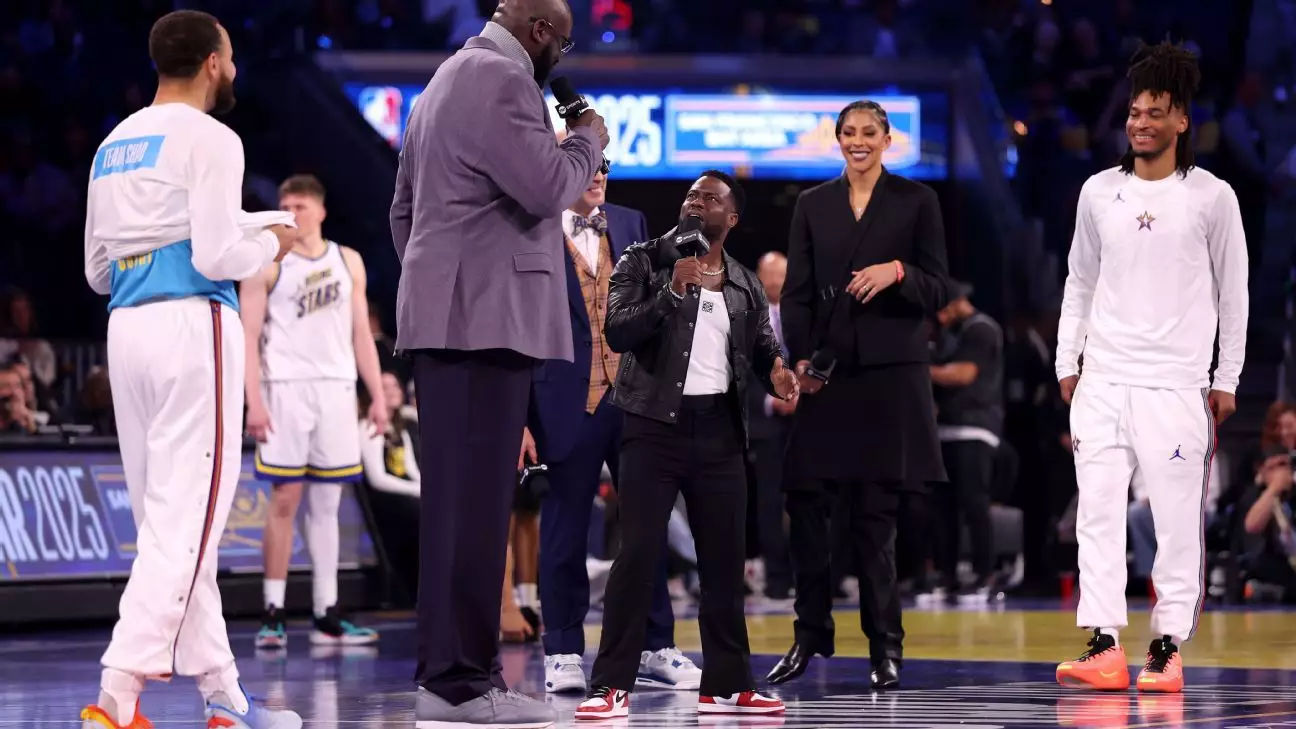The NBA All-Star Game has long been a showcase of the league’s elite talents, a fun-filled event that fans eagerly anticipate each year. However, the recent implementation of a new tournament structure has sparked heated discussion among players and fans alike. Moving away from the traditional East versus West matchup, the league adopted a four-team, single-elimination tournament format with rounds capped at a target score of 40 points. While such innovations aim to enhance engagement, this year’s competition displayed a mix of excitement overshadowed by puzzling interruptions.
As entertainment blends with athletics, the NBA enlisted popular figures like Charles Barkley, Kenny Smith, and Shaquille O’Neal for the drafting process. The teams they formed brought a notable mix of stars, but the true test lay in how this new approach would be received on game day. Players showcased their skills in a high-stakes, fast-paced environment, but this new formula drew criticism from athletes weary of the disengagement caused by prolonged breaks.
An immediate point of contention among participating players was the frequency and length of stoppages during gameplay. The presence of comedian Kevin Hart, who provided commentary during these breaks, was less a highlight and more a hindrance for many involved. Trae Young, a standout player for Chuck’s Global Stars, voiced his dissatisfaction, stating, “I didn’t like the breaks. The games were so short. Obviously, we can score. So, they’re trying to, I feel like, trying to extend the game, extend the TV time with the breaks and things like that.” Such sentiments highlight a critical issue: while entertainment plays a role in sports, its overemphasis can dilute the competitive spirit that defines the All-Star showcase.
The championship bout featured a particularly egregious 20-minute interruption to honor the TNT broadcasting crew, detracting from the rhythm of the game and frustrating players eager to maintain their momentum. Players like Shai Gilgeous-Alexander expressed their preference for a more fluid and uninterrupted play style, stressing that the interruptions detracted from what could have been a more fiercely competitive atmosphere.
Despite frustrations regarding the format, there were moments underscoring the excitement of the event. The competitive nature of the games, as seen in Shaq’s OGs clinching victory through stellar performances, gave fans glimpses of the All-Star event’s intangible thrill. The emergence of stars like Stephen Curry, who scored 12 points and secured the MVP, showcases the ever-present allure of the game, even amidst structural challenges. Comments from both Curry and Durant suggest a conscious awareness of the need for change and evolution within the league’s marquee event—representing not just the athletes’ performance, but also a heartfelt calling for keeping the spirit of the game vibrant.
Curry elaborated on his involvement in discussions with NBA Commissioner Adam Silver about renewing the event, emphasizing a desire for fresh energy. The collective player input may yield a vital impact on future formats, as the league grapples with maintaining audience interest without compromising the quality of play.
Another significant factor overshadowing this year’s All-Star event was the absence of marquee players like LeBron James, Giannis Antetokounmpo, and Anthony Edwards. Their absence left a noticeable void, impacting fan engagement and the overall competitiveness of the games. Without the league’s luminaries participating, the spotlight shifted ever so slightly away from the thrilling plays that typically embody the essence of All-Star Weekend.
Veteran players shared mixed feelings regarding the inclusion of first- and second-year Rising Stars in the tournament, another point raised by Draymond Green. His recollection of an era where rookie players were not a part of the All-Star festivities made clear the generational shift taking place in the league. While fresh faces may attract certain audiences, older players express concern that their hard-fought achievements may become diluted within a broader format focused on inclusivity rather than exclusivity.
As the dust settles on this year’s All-Star Game, players are left reflecting on the experience—questioning the balance between competitiveness, continuity, and entertainment. While the trial of this new format spurred debate about the nature of the contest, it is an opportunity for the NBA to refine its approach and re-establish what makes the All-Star Game a pillar of the basketball season. With player insights as a foundation, the NBA stands at a crossroads, poised to sculpt the future of this storied event in a manner that honors both tradition and forward-thinking adjustments. The challenge remains clear: how to craft a format that truly embodies the essence of competitive basketball while catering to the desires of an evolving audience.

